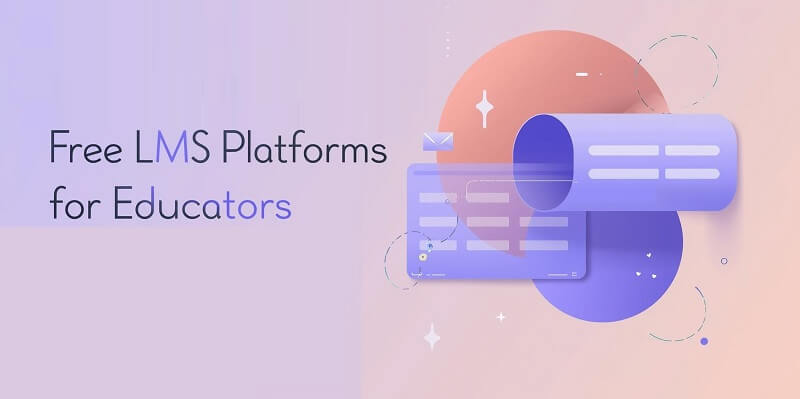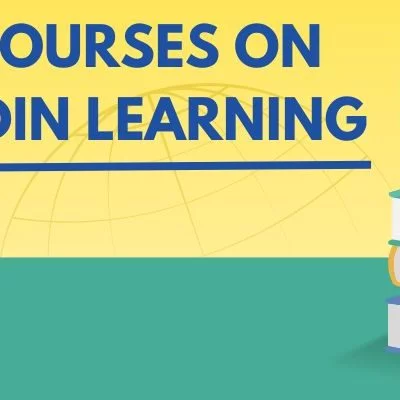Today, getting to know each other goes far beyond the lecture room and chalkboard. Digitalization has impacted every aspect of learning, and Free LMS Platforms for Educators have become the lifeblood of modern education. For teachers, an LMS is more than just a tool—it’s a pathway to reach learners, organize lessons, track progress, and deliver engaging content.
Though there are many paid LMS tools, free LMS tools for teachers have provided opportunities for educators, schools, and institutions who wish to introduce digital learning without making a dent in their finances. In 2025, such tools are more robust than ever, providing functionalities that previously only existed in high-end systems—similar to the best courses on LinkedIn Learning that empower educators to upskill and adapt to new teaching technologies.
In this article, we will examine the top free LMS tools for teachers, their features, advantages, and how they can change your teaching strategy.
Why Teachers Need an LMS
Let’s start with why LMS tools are so crucial to education today before we look at the list of free tools.
1. Centralized Learning Hub
An LMS allows you to hold lessons, assignments, quizzes, and material multi function location. No disorganized folders or regular emails.
2. Teacher and Student Flexibility
Students analyze at their own tempo, while teachers can train live or offer pre-recorded content material.
3. Tracking Progress
You can preserve music of pupil performance, locate mastering gaps, and offer custom designed feedback.
4. Collaboration
Discussion forums, chat, and organization working functionality fosters collaborative learning outside the classroom.
5. Economical Solutions
Free LMS tools offer sophisticated features without hefty subscription costs.
Best Free LMS Tools for Teachers in 2025
Here’s a closer examination of the top free LMS platforms currently available for educators.
1. Moodle
Moodle is certainly the most commonly used and popular open-source LMS platform. It is used by schools, universities and even governments.
Key Features:
- Open-source and totally free
- Fully customizable with plugins
- Assignment and grading features
- Discussion forums and quizzes
- Mobile-friendly interface
Why Educators Love It: Moodle provides total control of your courses. You can customize courses the way you prefer, add multimedia, and develop interactive activities.
Best For: Universities, schools, and teachers looking for total control over customizing.
2. Google Classroom
Google Classroom is a household name in education now, particularly after the pandemic. It plays super smoothly with other Google apps like Docs, Slides, and Drive.
Key Features:
- Easy creation of classes and invites to students
- Direct integration with Google Meet
- Assignment and grading management
- Collaboration using Docs and Slides
- Free to use with a Google account
Why Educators Love It: Google Classroom is easy and has virtually no technical configuration required. Teachers can make classes, share resources, and grade assignments within minutes.
Best For: Teachers and schools already leveraging Google Workspace.
3. Canvas (Free for Teachers Version)
Canvas by Instructure has a free version specifically made for teachers. It’s an excellent option to offer courses without shelling out enterprise-plan money.
Key Features:
- Multimedia course building
- Built-in quizzes and assignments
- Grading tools with rubrics
- Student analytics and reporting
- Mobile-friendly
Why Educators Love It: Canvas’ free version provides robust features, which makes it one of the best platforms for solo teachers who do not require enterprise support.
Best For: Solo educators or small schools.
4. Edmodo (Free Plan)
Edmodo blends LMS functionality with a social learning space, giving it the appearance and feel of an educational social network.
Key Features:
- Free and simple setup
- Communication tools for teachers and students
- Polls, quizzes, and assignments
- Parent access to monitor progress
- Mobile app support
Why Educators Love It: Edmodo is interactive and easy to use. It engages inexperienced persons by giving them an area that feels familiar, just like social media.
Best For: K-12 schools and collaborative classrooms.
5. Schoology (Basic Free Plan)
Schoology has a free variant that is popular among schools and instructors. It integrates LMS capabilities with features of advanced learning.
Key Features:
- Course and curriculum management
- Assignments and test authoring
- Collaboration tools integrated
- Mobile-friendly
- Parent access
Why Educators Love It: Schoology blends ease with strong abilities, making it clean for both new and veteran instructors.
Best For: Schools searching for a hybrid LMS-social gaining knowledge of revel in.
6. TalentLMS (Free Plan)
TalentLMS has a forever-free plan that accommodates 5 users and 10 courses. Though limited, it is suitable for small teaching environments.
Main Features:
- Cloud-hosted LMS
- Simple and intuitive interface
- Supports video, SCORM, and quizzes
- Gamification aspects such as badges and points
- Customizable learning paths
Why Educators Prefer It: TalentLMS is clean, simple, and easy to create courses. Gamification holds the students’ interest.
Best For: Freelance teachers or tutors.
7. Chamilo
Chamilo is yet another open-source LMS that is built for ease of use and simplicity.
Key Features:
- Free and open-source
- Course and examination management
- SCORM compliant
- Social learning facilities
- Certifications and progress monitoring
Why Educators Love It: Chamilo takes less technical work than Moodle, so teachers who desire an open-source but simple option have it.
Best For: Teachers who like open-source but require simplicity.
8. Open edX
Open edX is a robust platform initially created by Harvard and MIT. It finds extensive usage in MOOCs (Massive Open Online Courses).
Key Features:
- Free and open-source
- Sophisticated course development with multimedia
- Analysis and progress tracking
- Discussion forums
- Scalability for large classes
Why Educators Love It: Open edX is ideal for teachers who desire to provide large-scale courses to worldwide participants.
Best For: Institutions, universities, and online course providers.
9. Forma LMS
Forma LMS is built specifically for professional and corporate training, but it can be used by educators as well.
Key Features:
- Free and open-source
- Custom course building
- Certification and compliance tracking
- Mobile learning support
- Enlarged reporting
Why Educators Love It: It’s perfect for skill-based instruction and professional development courses.
Best For: Vocational training and skill development teachers.
10. Thinkific (Free Plan)
Thinkific is a popular online course platform that has a free plan for educators.
Key Features:
- Free plan has one course
- Drag-and-drop course builder
- Video and multimedia support
- Quizzes and certificates
- Student management
Why Educators Love It: It’s easy, trendy, and ideal for developing professional online classes.
Best For: Freelance educators designing online classes for revenue.
Key Benefits of Free LMS Platforms
Cost-Effective Learning
Free LMS platforms eliminate the cost hurdle for organizations, enterprises, and individuals. Without paid subscriptions, learners and trainers can utilize orderly education without extra charges.
Easy Accessibility
Since they are cloud-based, most free LMS tools can be accessed anytime and anywhere. This mobility makes them perfect for remote working teams, students, and globally reaching organizations.
Customization and Control
Most free LMS platforms support rudimentary customization, allowing teachers to create courses that best fit their instructional style and learners’ requirements. This incorporates personalization without additional expenses.
Collaboration and Engagement
Free LMS software is usually equipped with discussion boards, quizzes, and tracking of progress. They promote student participation, collaboration, and improved results.
Selecting the Correct LMS
When selecting a free LMS, consider:
- Number of students to teach.
- Adaptation is needed.
- User-friendship for you and your students.
- Compatibility with other tools (google, microsoft, zoom, etc.).
- Support (community or official).
Last Thoughts
The digital learning phenomenon has revolutionized the manner in which teachers instruct. There are no longer “minimal” free LMS solutions available in 2025. They are robust, adaptable, and capable of addressing the requirements of teachers at all levels.
Whether you are a school instructor utilizing Google Classroom, a university educator on Moodle, or an independent tutor browsing through Thinkific, there is an LMS that accommodates your requirements without spending a penny.
By using the right free LMS platform, you can do less paperwork and more of what is important—teaching and motivating your students.
FAQs
Q1: What is LMS?
A mastering control machine, or LMS, is a device that enables trainers to manipulate and keep tune of online courses.
Q2: Are free LMS platforms reliable?
Yes, most free LMS platforms are trustworthy, providing secure and stable functionalities.
Q3: Am I able to monitor student progress?
Yes. All but a few free LMS platforms have tracking and reporting tools.
Q4: Are free LMS platforms mobile learning-enabled?
Yes, a majority are mobile-friendly, with students being able to access content at any time.
Q5: Can I tailor free LMS platforms?
Most free LMS platforms offer basic customization to branding and course design.





